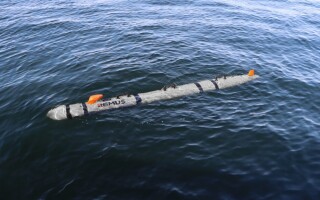CEREBRUS design used in MALD-Jammer demonstration
NewsSeptember 09, 2015

JOINT PACIFIC ALASKA RANGE COMPLEX, Ala. In a joint effort during the biannual Northern Edge exercise in Alaska, the U.S. Naval Research Lab and Raytheon conducted a flight test with the CEREBRUS design on the Miniature Air Launched Decoy-Jammer (MALD-J). The demonstration used IndyCar racing technology and allowed for quick replacement architecture on electronic warfare (EW) payloads.
During the exercise, four separately developed EW payloads were used in 12 missions. Each payload, customized for its mission, was swapped onto the captive carry vehicle in less than a minute, Raytheon officials say.
“It's a sensible approach for mitigating payload obsolescence," says Dr. Jeff Heyer, head of Electronic Warfare Strategic Planning Organization at Naval Research Laboratory. "The design embodies the CNO's 'Payloads over Platforms' vision."
The U.S. Pacific Command and Naval Air Systems Command (PMA-234) also collaborated in the four-year program, in which they helped to develop a payload system architecture integrated with a quick interchange structural connection. The CEREBRUS design stemmed from IndyCar racing technology by adapting the half-turn quick lock developed by Dallara.
The exercise also demonstrated a MALD vehicle that carried below a Sabreliner, with the aircraft cabin controlling the payload from within. This allows for real-time control and data analysis during a flight test, officials say.
Read more on electronic warfare:
U.S. Navy's electronic warfare modernization effort centers on COTS
Sonar contract for anti-submarine warfare won by Raytheon
Raytheon’s jammer prototype completes early milestone






